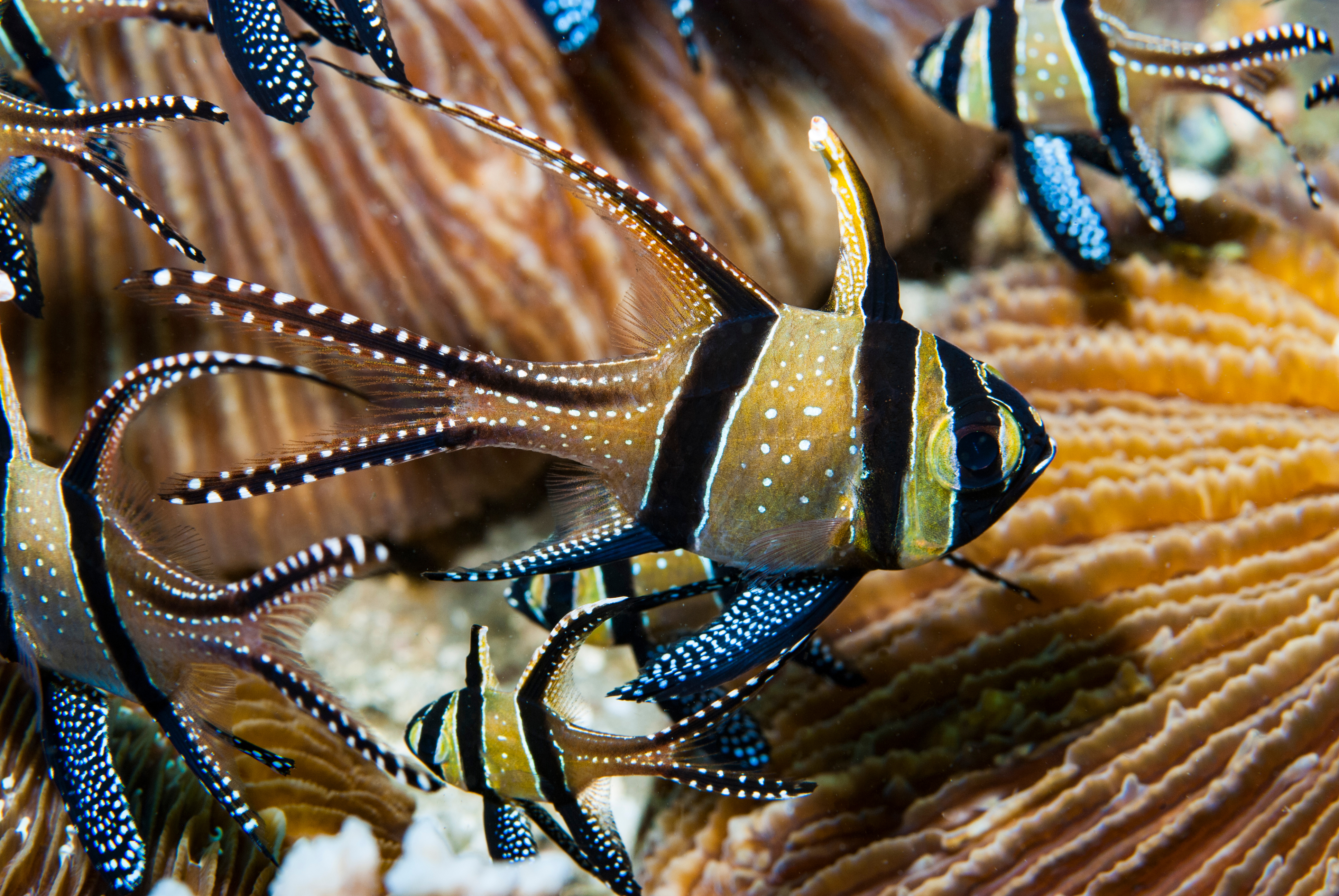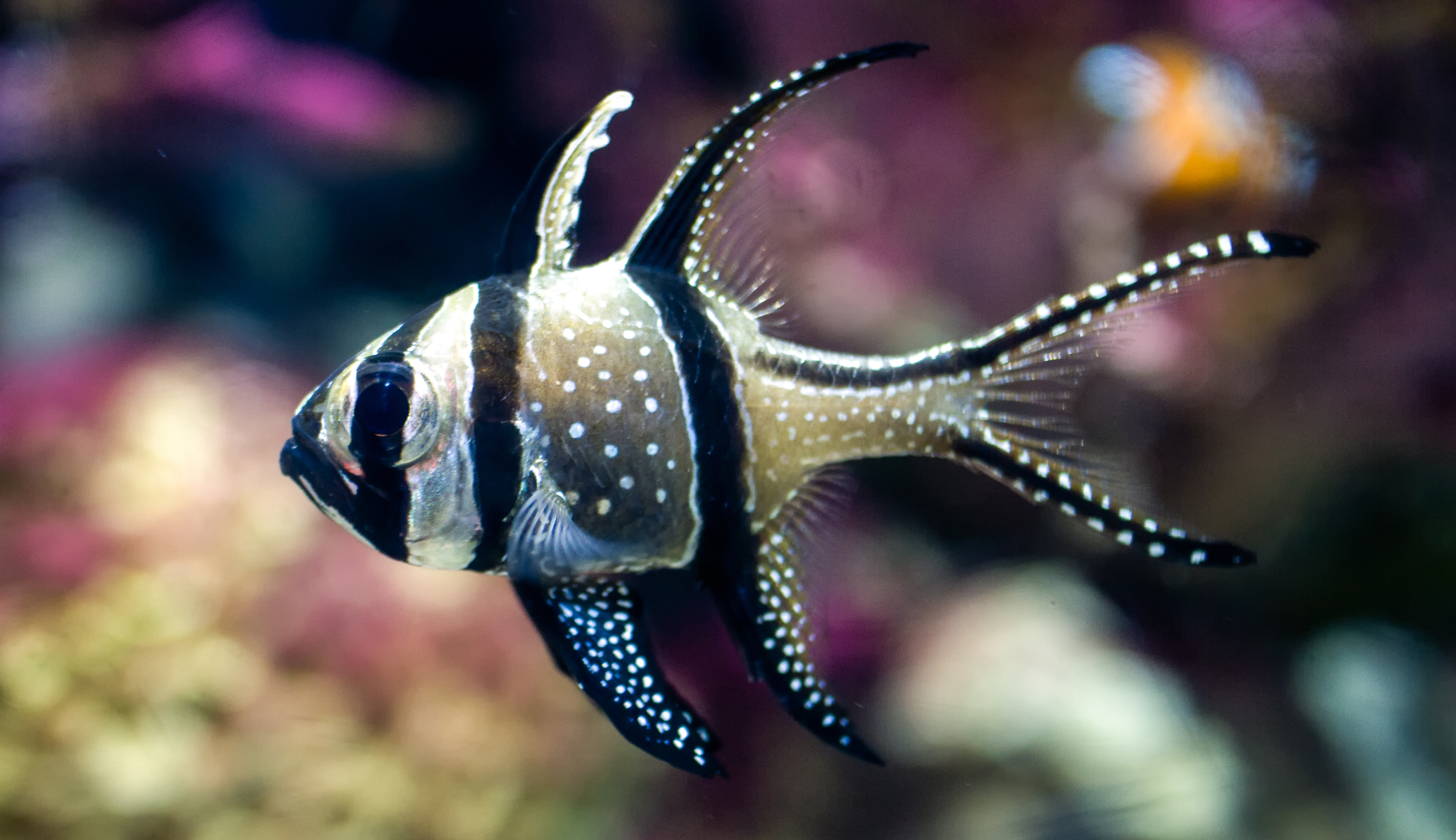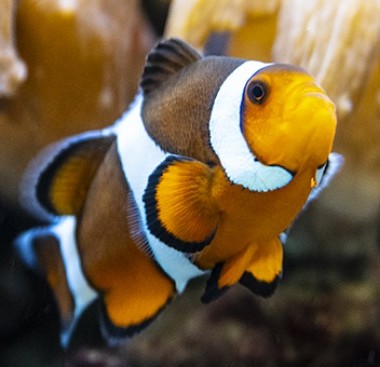Cardinal 4d Rules
Why the National Marine Fisheries Service’s Proposed 4d Rule is Not Effective Policy for the Conservation of the Banggai Cardinalfish in its Natural Habitat
By: Art Parola Date: 09/13/2023 Category: | Animal Legislation |
In August, the National Marine Fisheries Service proposed a rule under section 4d of the Endangered Species Act that would criminalize the import and export of Banggai Cardinalfish, Pterapogon kauderni, in the United States. While the applicable legal and regulatory processes and dynamics, economics, impacts of trade, and the status of the species in the wild are complicated, the conclusion is clear. The proposed rule will not aid in the conservation of wild populations of Banggai cardinalfish. However, it will negatively impact sustainable development, aquaculture, and investment in effective fisheries management programs.
To understand the present situation, some knowledge of the framework the US uses to regulate marine species is required. The Endangered Species Act (ESA) is a law passed in 1973 to regulate species that are threatened with extinction (designated as “endangered” species) or may become so in the future (designated as “threatened” species). Two executive branch agencies are delegated authority under the ESA: the United States Fish and Wildlife Service (USFWS), and the National Marine Fisheries Service (NMFS). USFWS lists and regulates terrestrial and freshwater aquatic species that qualify for ESA regulation. NMFS lists and regulates marine aquatic species that qualify for ESA regulation.
In 2016, the NMFS determined that the Banggai cardinalfish fit the ESA’s definition of threatened species based on the best available data. Since that time, major changes have impacted the status of the species. Firstly, as more data has been collected, some of the science used to make the threatened species status determination has been called into question. Secondly, and most importantly, Indonesia, local NGOs, and the scientific community have taken considerable action to collect data and implement management of the species in the wild. Also, since the species was listed, aquaculture has supplanted wild collection of Banggai cardinalfish as the primary source of Banggai cardinalfish imported into the United States.
Most Banggai cardinalfish sold in the United States are imported from overseas. There is little to no aquaculture of the species on a commercial scale in the US, although there is some small-scale production by hobbyist breeders. In recent years, approximately 120,000 Banggai cardinalfish are imported annually into the US. Of those, approximately 100,000 (approximately 85% of all specimens) were imported annually by one wholesaler from a breeding facility in Southeast Asia outside the range state of the species. The remaining approximately 20,000 (15% of the annual total) represent a mix of captive bred and wild caught specimens. However, not all wild caught specimens originate from the native range, as collection does occur in areas in which the species does not naturally occur but has been introduced. In total around 90% or more of the Banggai cardinalfish sold in the US originate from foreign aquaculture operations.
The wild fishery for Banggai cardinalfish has received significant scrutiny over the years. But while overharvest contributing to local population declines has occurred in the past, conservation efforts by the Indonesian government and local NGOs such as the Indonesian Nature Foundation (LINI) have reversed those trends and populations have generally recovered. In 2017, the Indonesian government implemented the Banggai Cardinalfish National Plan of Action. The aims of this plan were to collect data and current information on Banggai cardinalfish populations in their natural habitats, implement protection and preservation of Banggai cardinalfish in their natural habitat, promote sustainable use and trade of the Banggai cardinalfish, improve human resources and capacity to effectively conserve and manage Banggai cardinalfish, and improve conservation governance. To meet these goals, the government implemented measures including permit requirements to collect, transport, and export the species, site specific quotas, and open and closed seasons. Researchers from LINI and the University of Tadulako monitor populations through field surveys. LINI also conducts training to promote best practices in collection and handling to ensure the health of the fish and the protection of the habitat in which they are collected. The recovery of Banggai cardinalfish populations in the Banggai Archipelago has been thoroughly studied, with one paper even pointing the relatively short time it takes for a local population to recover once proper conservation management measures are implemented. So long as the current conservation management plan continues to be adhered to, which all indicators point to being the case, the future of Banggai cardinalfish in the wild is secure.
 Indonesia’s management of the Banggai cardinalfish fishery has made it a model fishery for promoting livelihoods and sustainable use of natural resources. Indonesia’s work to eliminate overfishing and recover populations not only avoided the listing of the Banggai cardinalfish on the Appendices of the Convention on the International Trade in Endangered Species (CITES), but at the 18th CITES Conference of the Parties, held in Geneva, Switzerland in July 2019, Indonesia was affirmatively recognized for conserving the species and sustainably managing the fishery.
Indonesia’s management of the Banggai cardinalfish fishery has made it a model fishery for promoting livelihoods and sustainable use of natural resources. Indonesia’s work to eliminate overfishing and recover populations not only avoided the listing of the Banggai cardinalfish on the Appendices of the Convention on the International Trade in Endangered Species (CITES), but at the 18th CITES Conference of the Parties, held in Geneva, Switzerland in July 2019, Indonesia was affirmatively recognized for conserving the species and sustainably managing the fishery.
The United States is currently the largest market for aquarium fish. US policy therefore has a substantial impact on the worldwide trade. The rule proposed by the NMFS would effectively end all current availability of commercially aquacultured Banggai cardinalfish in the United States. It would also have deep repercussions for management of the fishery in the species’ native range.
Conservation efforts are often difficult in developing countries. Limited resources require developing nations see long-term returns in order to invest in conservation. Implementation of the proposed ban on importation and exportation of Banggai cardinalfish in the United States disincentivizes investment in aquaculture and sustainable fisheries management. Promulgation of the NMFS’s proposed rule in its current form will have disastrous consequences, not only for the Banggai cardinalfish and livelihoods in Indonesia today, but for the future of aquaculture, sustainable fisheries, and livelihoods all over the world.
How You Can Help:
The National Marine Fisheries Service is currently accepting comments on the proposed rule to ban the import and export of Banggai cardinalfish. You can submit your comment at the link below:
Outlined below are some points to consider when writing your comments. Use your own words and don't feel like you need to write more than a sentence or two. What's important is to let your voice be heard on this important rule.
- Make sure to clearly state that you OPPOSE the proposed rule banning import and export of Banggai Cardinalfish.
- National Marine Fisheries Service failed to consider best available data when drafting its proposed rule to ban the import and export of Banggai cardinalfish.
- The international community, through CITES, and Indonesia, using best available science, have determined current regulations are sufficient to conserve wild populations of Banggai cardinalfish.
- The Indonesian government has implemented an internationally recognized management plan to ensure sustainability of the Banggai cardinalfish fishery.
- CITES determined the management of the species by Indonesia to be sufficient regulation to protect wild populations of Banggai cardinalfish.
- There has been significant investment in overseas aquaculture of Banggai cardinalfish and banning import into the US would undermine those investments and efforts.
- Banning the import and export of Banggai cardinalfish in the US would not further conservation of the species in its natural habitat.
- Banning the import of Banggai cardinalfish into the US would have negative consequences for aquaculture and fisheries management in developing countries.
 Art Parola developed a love of nature from a young age, spending as much time as he could, covered in mud and creek water, with a butterfly net chasing every critter that crawled, slithered, or swam and trying to identify them with his collection of field guides. This led him to a career path focused on animal welfare, sustainable development, and conserving nature, particularly through sustainable use policy initiatives. He is currently a consultant while pursuing a law degree. He still hasn’t lost his childhood enthusiasm for spending time in nature, although he now more commonly carries a camera instead of a net. His writing and photographs have appeared in numerous online articles, as well as in print publications in multiple countries around the world.
Art Parola developed a love of nature from a young age, spending as much time as he could, covered in mud and creek water, with a butterfly net chasing every critter that crawled, slithered, or swam and trying to identify them with his collection of field guides. This led him to a career path focused on animal welfare, sustainable development, and conserving nature, particularly through sustainable use policy initiatives. He is currently a consultant while pursuing a law degree. He still hasn’t lost his childhood enthusiasm for spending time in nature, although he now more commonly carries a camera instead of a net. His writing and photographs have appeared in numerous online articles, as well as in print publications in multiple countries around the world.
About The Author
All Authors Of This Article: |













